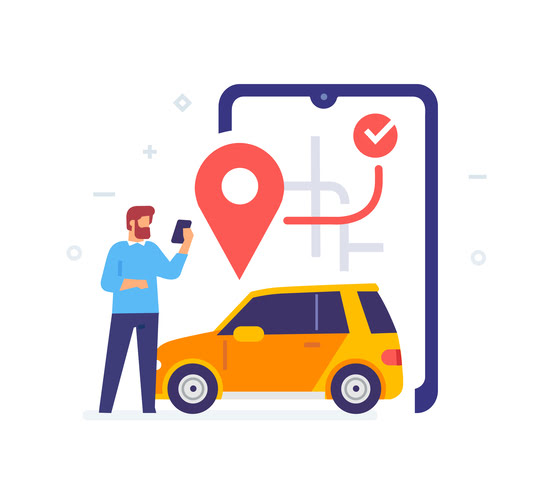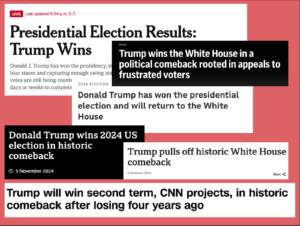If that’s your use case, I would focus on identifying the foundational parts that are often common across these apps and just induce redundancy. Your app’s user would find it irrational to lose information that was just there a few seconds ago. Even if it vanished as he/she moved from one screen to another or minimized his app.
Let’s take the example of Groupon’s product listing screen here. There’s whole lot of design aspect that was applied by Groupon here to scale and deliver a product screen that could supports more than 200M app users. If we have to push updates to your app, we either have to do it using upfront heavily bloated app size or with lengthy (unpredictable?) app store/Play store review processes. While, I am going to cover developing eCommerce microservices in another blog post, I walk you through why they are extremely important for eCommerce apps. Since eCommerce apps are extremely complex and they keep evolving, it makes sense for us to follow a domain driven design here. With a domain driven design, we have specific teams and stakeholders responsible for each services.
How & why to build an e-commerce mobile app for customers
The eCommerce mobile app development process involves the integration of the back-end, application programming interfaces , and front-end. Reducing the time and effort it mobile eCommerce app takes to shop on an ecommerce app will keep cart abandonment rates low. In fact, users shopping on a mobile eCommerce app tend to spend far more than those on websites.
You need to brainstorm the ideas and functions to make the online store more captivating and have repeat purchases. Some functions could be push messages, easy checkouts, lookbooks, and multiple payment options. Other things that also capture the attention of customers include customized designs and branding, back-end synchronization, rating or feedback system, and social media collaboration. These basic feature requirements make your online platform outstanding among competitors, as most customers look for easygoing and appealing platforms for shopping. So far, it’s one of the crucial aspects to consider before you immerse yourself in e-commerce mobile application development. Keep track of the industry giants that are engaged in the same niche.
Simplify and Succeed with Intelligent Marketing Automation
It’s important to find this out before you commence any further because how Apple and Android apps operate is entirely different. Not just this, but the items or services you supply as an independent retailer will be more unique than those of larger retailers and this could also give you a competitive edge. On the other hand, if you can’t identify any competitors on the app stores, it could be that there isn’t a market for it. Application color schemes, attractive appearance, and smooth modifications from page to page will make an enduring perception of the customer about your store.

If you choose us to develop an e-commerce application in Android or iOS, you can rest assured that only experienced programmers and project managers will be working in your dedicated team. People from this generation welcome tech solutions but also like it when innovative features are intuitive and can make their lives easier. Moreover, some of them even manage to improve online and offline sales. For example, Domino’s Pizza has invested in building a mobile app.
Types of Ecommerce Mobile Apps
You can test alternatives and see how they work and deliver results, without significant investment and without breaking anything else. We do see information on how load balancers, server capacity and storage that we have – but we don’t exactly see how internal services are going to work with each other. So, that leads to a situation where we don’t know how to ensure “Adding items to the cart” works all the time, especially during a high velocity sale. We have third party services operating in a separate server from our core service. As we don’t control 3rd party services, they are a significant risk to our core infrastructure. If not well separated from our app infrastructure, their failures might cause your entire app to break down.

As a consequence of this Operating System specific development native apps can make full use of all the features a mobile phone has to offer. The next step of the Ecommerce App development process requires the UI/UX designers to get into action and design the first working UI/UX model for the application. The aim is to create the first prototype of the app that will be presented to the testing audience for usage and will give the development team an idea for the final product. The company contacted EPAM because they wanted to provide their customers with a first-class e-commerce experience.
Your apps made to order
It’s apparent that the younger and more self-conscious a person is, the more hang they have on smartphone tech opportunities and more prone they are to resort to time-saving mobile purchases. When you leverage customer segmentation, you’ll build a framework for running well-hypothesized experiments. And the primary goal of this data is to provide a more engaging experience. To portray your target audience, you can use such categories as their place of living, gender, age, interests, profession, etc.
- If done properly, the app can actually retain some information and function well even when there’s no network connection.
- The performance, code quality and consistency of doing something in this case depends upon the skill of developer.
- And don’t be too stingy here, because an e-commerce app is a great investment for your business in the long run.
- If the app has any defects, then it is very much recommended to solve those bugs as soon as possible.
- Adding a wishlist button is also a great way of reducing the cart abandonment rate.
Apps are robust tools to build the reputation of your brand, advertise your service and catch the attention of prospective customers. Furthermore, mobile users have great opportunities to receive push notifications with discounts, giveaways, and special offerings. Meaning that they could save on costs, thus from a psychological viewpoint, they are more likely to interact with such brands regularly.
Compatible App Design for All Size.
Next, when the API methods change their signature, or other structural changes are made, you will be able to rebuild the client. Once the client is set up, it will be generated as a package and we just need to indicate that we will use it in the app. It is only required to “teach” the repositories to work with these methods. When it comes to interacting with an API, it’s often a challenge to implement an access client and keep it up to date. To simplify the process of making changes/adapting to the new API, make sure that your API is described according to the OpenAPI 3 specification. In fact, the use of a token does not require proof of ownership from the bearer, and it is very important to keep this information under control.
It is estimated that more than 4 billion consumers globally will buy products and services online in 2025, up from 3 billion global digital customers in 2019. Now that you’ve figured out what your ecommerce app needs in terms of feature requirements, let’s talk about your budget and process. Launching an ecommerce app isn’t a question of why anymore, it’s a question of how to do it correctly.
Approximate app creation cost
Creating the first version of the minimum viable eCommerce app may take months. Developing it into a medium complexity app usually takes an extra 7 months. So get ready https://www.globalcloudteam.com/ that your eCommerce app would constantly be changing. Second, the cost is different depending on the location where a software development company is located.





Be First to Comment